2) Starting with a fertilized egg (zygote), a series of five cell
divisions would produce an early embryo with how many cells?
A)
4
B) 8
C) 16
D) 32
E) 64
D)32
For a newly evolving protist, what would be the advantage of using
eukaryote-like cell division rather than binary fission?
A) Binary fission would not allow for the formation of new
organisms.
B) Cell division would allow for the orderly and
efficient segregation of multiple linear chromosomes.
C) Cell
division would be faster than binary fission.
D) Cell division
allows for lower rates of error per chromosome replication.
E)
Binary fission would not allow the organism to have complex cells.
B) Cell division would allow for the orderly and efficient segregation of multiple linear chromosomes.
Suppose a biologist can separate one of a dozen pieces of chromatin
from a eukaryotic (animal) nucleus. It might consist of which of the
following?
A) one-twelfth of the genes of the organism
B) two chromosomes, each with six chromatids
C) a single
circular piece of DNA
D) two long strands of DNA plus proteins
E) two chromatids attached together at a centromere
D) two long strands of DNA plus proteins
6) At which phase are centrioles beginning to move apart in animal
cells?
A) telophase
B) anaphase
C)
prometaphase
D) metaphase
E) prophase
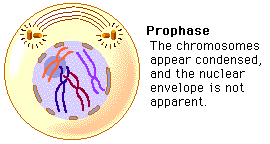
E) PROPHASE
7) If cells in the process of dividing are subjected to colchicine, a
drug that interferes with the formation of the spindle
apparatus, at which stage will mitosis be arrested?
A) anaphase
B) prophase
C) telophase
D)
metaphase
E) interphase
D) metaphase
formation of the spindle apparatus
If there are 20 centromeres in a cell at anaphase, how many
chromosomes are there in each daughter cell following cytokinesis?
A) 10
B) 20
C) 30
D) 40
E) 80
A) 10
Where do the microtubules of the spindle originate during mitosis in
both plant and animal cells?
A) centromere
B)
centrosome
C) centriole
D) chromatid
E) kinetochore
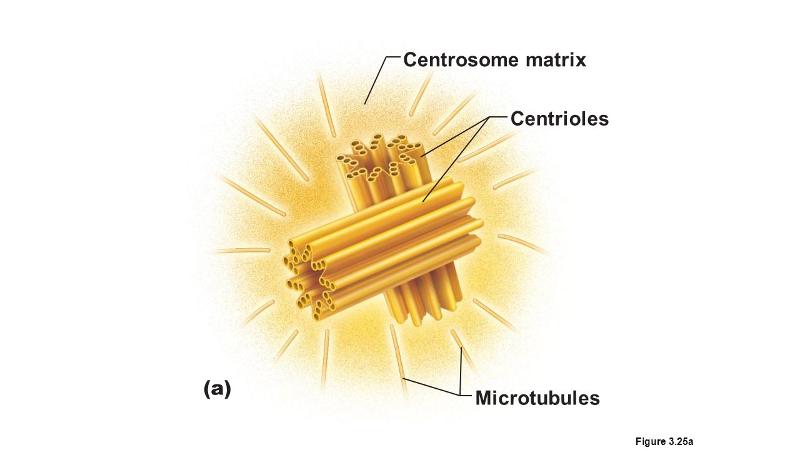
B) centrosome
Taxol is an anticancer drug extracted from the Pacific yew tree. In
animal cells, Taxol disrupts microtubule formation by binding to
microtubules and accelerating their assembly from the protein
precursor, tubulin. Surprisingly, this stops mitosis. Specifically,
Taxol must affect
A) the formation of the mitotic
spindle.
B) anaphase.
C) formation of the centrioles.
D) chromatid assembly.
E) the S phase of the cell cycle.
A) the formation of the mitotic spindle.
Which of the following are primarily responsible for cytokinesis in
plant cells but not in animal cells?
A) kinetochores
B) Golgi-derived vesicles
C) actin and myosin
D)
centrioles and centromeres
E) cyclin-dependent kinases
B) Golgi-derived vesicles
In which group of eukaryotic organisms does the nuclear envelope
remain intact during mitosis?
A) seedless plants
B) dinoflagellates
C) diatoms
D) dinoflagellates
and diatoms only
E) seedless plants, dinoflagellates, and diatoms
D) dinoflagellates and diatoms only
research!!!
A group of cells is assayed for DNA content immediately following
mitosis and is found to have an average of 8 picograms of DNA per
nucleus. How many picograms would be found at the end of S and the end
of G₂?
A) 8; 8
B) 8; 16
C) 16; 8
D)
16; 16
E) 12; 16
D) 16; 16
For anaphase to begin, which of the following must occur?
A) Chromatids must lose their kinetochores.
B) Cohesin
must attach the sister chromatids to each other.
C) Cohesin must
be cleaved enzymatically.
D) Kinetochores must attach to the
metaphase plate.
E) Spindle microtubules must begin to depolymerize
C) Cohesin must be cleaved enzymatically.
Which of the following best describes how chromosomes move toward the
poles of the spindle during mitosis?
A) The chromosomes
are "reeled in" by the contraction of spindle microtubules.
B) Motor proteins of the kinetochores move the chromosomes
along the spindle microtubules.
C) Nonkinetochore spindle
fibers serve to push chromosomes in the direction of the poles.
D) The chromosomes are "reeled in" by the contraction
of spindle microtubules, and motor proteins of the kinetochores move
the chromosomes along the spindle microtubules.
E) The
chromosomes are "reeled in" by the contraction of spindle
microtubules, motor proteins of the kinetochores move the chromosomes
along the spindle microtubules, and nonkinetochore spindle fibers
serve to push chromosomes in the direction of the poles.
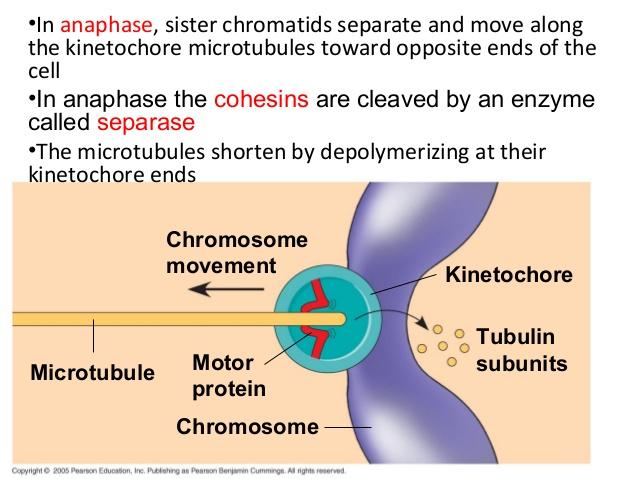
D) The chromosomes are "reeled in" by the contraction of spindle microtubules, and motor proteins of the kinetochores move the chromosomes along the spindle microtubules.
Which of the following is a function of those spindle microtubules
that do not attach to kinetochores?
A) maintaining an
appropriate spacing among the moving chromosomes
B) producing a
cleavage furrow when telophase is complete
C) providing the ATP
needed by the fibers attached to kinetochores
D) maintaining
the region of overlap of microtubules in the cell's center
E)
pulling the poles of the spindles closer to one another
D) maintaining the region of overlap of microtubules in the cell's center
During which phase of mitosis do the chromatids become chromosomes?
A) telophase
B) anaphase
C) prophase
D) metaphase
E) cytokinesis
A) telophase
The human genome is minimally contained in which of the following?
A) every human cell
B) each human chromosome
C) the
entire DNA of a single human
D) the entire human population
E) each human gene
A) every human cell
In the human species, all somatic cells have 46 chromosomes. Which of the following can also be true?
A) A plant species (privet shrubs) has 46 chromosomes per cell.
B) Some adult humans have 69 chromosomes per cell.
C) Some
adult humans have 23 chromosomes per cell.
D) A certain fungal
species has only one chromosome per cell.
E) A certain bacterial
species has 23 chromosomes
A) A plant species (privet shrubs) has 46 chromosomes per cell.
Which of the following is a true statement about sexual vs. asexual
reproduction?
A) Asexual reproduction, but not sexual
reproduction, is characteristic of plants and fungi.
B) In
sexual reproduction, individuals transmit 50% of their genes to each
of their offspring.
C) In asexual reproduction, offspring are
produced by fertilization without meiosis.
D) Sexual
reproduction requires that parents be diploid.
E) Asexual
reproduction produces only haploid offspring
B) In sexual reproduction, individuals transmit 50% of their genes to each of their offspring.
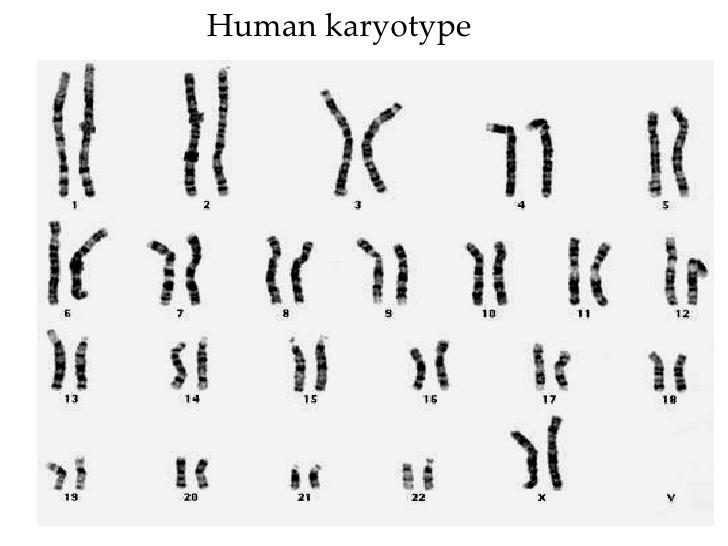
At which stage of mitosis are chromosomes usually photographed in the
preparation of a karyotype?
A) prophase
B) metaphase
C) anaphase
D) telophase
E) interphase
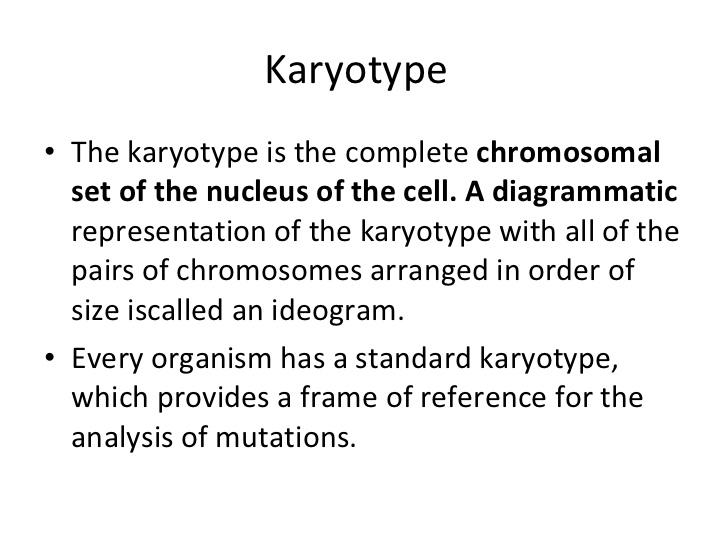
B) metaphase
Which of the following defines a genome?
A) representation of a
complete set of a cell's polypeptides
B) the complete set of an
organism's polypeptides
C) the complete set of a species'
polypeptides
D) a karyotype
E) the complete set of an
organism's genes
E) the complete set of an organism's genes
Answer: E
Which of the following is true of a species that has a chromosome
number of 2n = 16?
A) The species is diploid with 32
chromosomes per cell.
B) The species has 16 sets of chromosomes
per cell.
C) Each cell has eight homologous pairs.
D)
During the S phase of the cell cycle there will be 32 separate
chromosomes.
E) A gamete from this species has four chromosomes
C) Each cell has eight homologous pairs.
Eukaryotic sexual life cycles show tremendous variation. Of the
following elements, which do all sexual life cycles have in common?
I. Alternation of generations
II. Meiosis
III. Fertilization
IV. Gametes
V. Spores
A) I, IV, and V
B) I, II, and IV
C) II, III, and IV
D) II, IV, and V
E) I, II, III, IV, and V
C) II, III, and IV
Which of these statements is false?
A) In humans, each of the
22 maternal autosomes has a homologous paternal chromosome.
B)
In humans, the 23rd pair, the sex chromosomes, determines whether the
person is female (XX) or male (XY).
C) Single, haploid (n) sets
of chromosomes in ovum and sperm unite during fertilization, forming a
diploid (2n), single-celled zygote.
D) At sexual maturity,
ovaries and testes produce diploid gametes by meiosis.
E) Sexual
life cycles differ with respect to the relative timing of meiosis and fertilization
D) At sexual maturity, ovaries and testes produce diploid gametes by meiosis.
Referring to a plant's sexual life cycle, which of the following
terms describes the process that leads directly to the formation of
gametes?
A) sporophyte meiosis
B) gametophyte mitosis
C) gametophyte meiosis
D) sporophyte mitosis
E)
alternation of generations
B) gametophyte mitosis
Which of the following is an example of alternation of generations?
A) A grandparent and grandchild each have dark hair, but the
parent has blond hair.
B) A diploid plant (sporophyte) produces,
by meiosis, a spore that gives rise to a multicellular, haploid pollen
grain (gametophyte).
C) A diploid animal produces gametes by
meiosis, and the gametes undergo fertilization to produce a diploid
zygote.
D) A haploid mushroom produces gametes by mitosis, and
the gametes undergo fertilization, which is immediately followed by
meiosis.
E) A diploid cell divides by mitosis to produce two
diploid daughter cells, which then fuse to produce a tetraploid cell.
B) A diploid plant (sporophyte) produces, by meiosis, a spore that gives rise to a multicellular, haploid pollen grain (gametophyte).
The karyotype of one species of primate has 48 chromosomes. In a
particular female, cell division goes awry and she produces one of her
eggs with an extra chromosome (25). The most probable source of this
error would be a mistake in which of the following?
A) mitosis
in her ovary
B) metaphase I of one meiotic event
C)
telophase II of one meiotic event
D) telophase I of one meiotic
event
E) either anaphase I or II
E) either anaphase 1 and 2
A given organism has 46 chromosomes in its karyotype. We can
therefore conclude which of the following?
A) It must be human.
B) It must be a primate.
C) It must be an animal.
D)
It must be sexually reproducing.
E) Its gametes must have 23 chromosomes
E) Its gametes must have 23 chromosomes.
A triploid cell contains three sets of chromosomes. If a cell of a
usually diploid species with 42 chromosomes per cell is triploid, this
cell would be expected to have which of the following?
A) 63
chromosomes in 31 1/2 pairs
B) 63 chromosomes in 21 sets of 3
C) 63 chromosomes, each with three chromatids
D) 21
chromosome pairs and 21 unique chromosomes
B) 63 chromosomes in 21 sets of 3
A karyotype results from which of the following?
A) a natural
cellular arrangement of chromosomes in the nucleus
B) an
inherited ability of chromosomes to arrange themselves
C) the
ordering of human chromosome images
D) the cutting and pasting
of parts of chromosomes to form the standard array
E) the
separation of homologous chromosomes at metaphase I of meiosis
C) the ordering of human chromosome images
Which of the following best describes a karyotype?
A) a
pictorial representation of all the genes for a species
B) a
display of each of the chromosomes of a single cell
C) the
combination of all the maternal and paternal chromosomes of a species
D) the collection of all the chromosomes in an individual
organism
E) a photograph of all the cells with missing or extra chromosomes
B) a display of each of the chromosomes of a single cell
If a cell has completed the first meiotic division and is just
beginning meiosis II, which of the following is an appropriate
description of its contents?
A) It has half the amount of DNA as
the cell that began meiosis.
B) It has the same number of
chromosomes but each of them has different alleles than another cell
from the same meiosis.
C) It has half the chromosomes but twice
the DNA of the originating cell.
D) It has one-fourth the DNA
and one-half the chromosomes as the originating cell.
E) It is
identical in content to another cell from the same meiosis
A) It has half the amount of DNA as the cell that began meiosis.
Which of the following can utilize both mitosis and meiosis in the
correct circumstances?
A) a haploid animal cell
B) a
diploid cell from a plant stem
C) any diploid animal cell
D) a plantlike protist
E) an archaebacterium
D) a plantlike protist
Which of the following might result in a human zygote with 45
chromosomes?
A) an error in either egg or sperm meiotic anaphase
B) failure of the egg nucleus to be fertilized by the sperm
C) fertilization of a 23 chromosome human egg by a 22 chromosome
sperm of a closely related species
D) an error in the alignment
of chromosomes on the metaphase plate
E) lack of chiasmata in
prophase I
A) an error in either egg or sperm meiotic anaphase
Which of the following was a discovery that had to be made before
human chromosomes could be correctly counted?
A) how to
use a hypotonic solution to swell nuclei
B) how to visualize
sperm nuclei
C) how to visualize chromosomes
D) when to
see chromosomes separate from one another
E) when to see
chromosomes in pairs
A) how to use a hypotonic solution to swell nuclei
Which of the following is (are) required for motor proteins to
function in the movement of chromosomes toward the poles of the
mitotic spindle?
A) intact centromeres
B) an MTOC
(microtubule organizing center)
C) a kinetochore attached to
the metaphase plate
D) ATP as an energy source
E)
synthesis of cohesin
D) ATP as an energy source
Which of the following proteins are involved in binary fission as
well as eukaryotic mitotic division?
A) cyclins
B) Cdks
C) MPF
D) actin and tubulin
E) cohesins
D) actin and tubulin
Using which of the following techniques would enable your lab group
to distinguish between a cell in G₂ and a cell from the same organism
in G₁?
A) fluorescence microscopy
B) electron
microscopy
C) spectrophotometry
D) radioactive-labeled
nucleotides
E) labeled kinetochore proteins
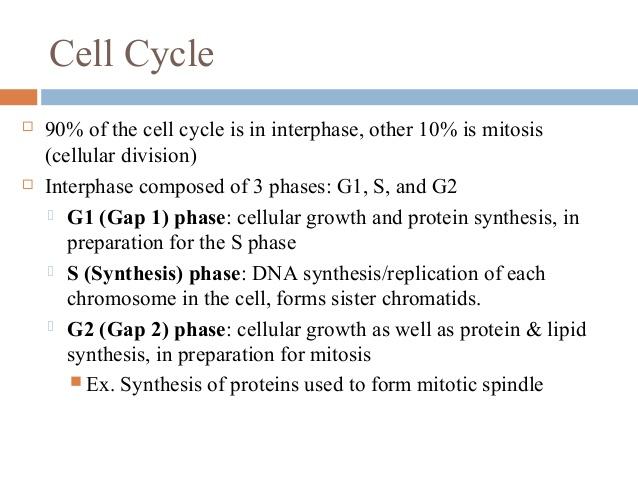
D) radioactive-labeled nucleotides
You have the technology necessary to measure each of the following in
a sample of animal cells: chlorophylls, organelle density, picograms
of DNA, cell wall components, and enzymatic activity. Which would you
expect to increase significantly from M to G₁?
A)
organelle density and enzymatic activity
B) cell wall
components and DNA
C) chlorophyll and cell walls
D)
organelle density and cell walls
E) chlorophyll and DNA
A) organelle density and enzymatic activity
A plant-derived protein known as colchicine can be used to poison
cells by blocking the formation of the spindle. Which of the following
would result if colchicine is added to a sample of cells in G₂?
A) The cells would immediately die.
B) The cells would be
unable to begin M and stay in G₂.
C) The chromosomes would coil
and shorten but have no spindle to which to attach.
D) The
chromosomes would segregate but in a disorderly pattern.
E) Each
resultant daughter cell would also be unable to form a spindle
C) The chromosomes would coil and shorten but have no spindle to which to attach.
What causes the decrease in the amount of cyclin at a specific point
in the cell cycle?
A) an increase in production once the
restriction point is passed
B) the cascade of increased
production once its protein is phosphorylated by Cdk
C) the
changing ratio of cytoplasm to genome
D) its destruction by a
process initiated by the activity of its complex with a cyclin
E) the binding of PDGF to receptors on the cell surface
D) its destruction by a process initiated by the activity of its complex with a cyclin
Which of the following is released by platelets in the vicinity of an
injury?
A) PDGF
B) MPF
C) protein kinase
D) cyclin
E) Cdk
A) PDGF
Тромбоцитарный фактор роста
Platelet-derived growth factor (PDGF) is one of the numerous growth factors or proteins that regulate cell growth and division. In particular, it plays a significant role in blood vessel formation (angiogenesis), the growth of blood vessels from already-existing blood vessel tissue
Which of the following is a protein synthesized at specific times
during the cell cycle that associates with a kinase to form a
catalytically active complex?
A) PDGF
B) MPF
C) protein kinase
D) cyclin
E) Cdk
D) cyclin
Proteins that are involved in the regulation of the cell cycle, and
that show fluctuations in concentration during the cell cycle, are
called
A) ATPases.
B) kinetochores.
C) kinases.
D) proton pumps.
E) cyclins.
E) cyclins
A mutation results in a cell that no longer produces a normal protein
kinase for the M phase checkpoint. Which of the following would likely
be the immediate result of this mutation?
A) The cell
would prematurely enter anaphase.
B) The cell would never leave
metaphase.
C) The cell would never enter metaphase.
D)
The cell would never enter prophase.
E) The cell would undergo
normal mitosis, but fail to enter the next G₁ phase.
E) The cell would undergo normal mitosis, but fail to enter the next G₁ phase.
Which of the following is true concerning cancer cells?
A) They do not exhibit density-dependent inhibition when growing
in culture.
B) When they stop dividing, they do so at random
points in the cell cycle.
C) They are not subject to cell cycle
controls.
D) When they stop dividing, they do so at random
points in the cell cycle, and they are not subject to cell cycle
controls.
E) When they stop dividing, they do so at random
points in the cell cycle; they are not subject to cell cycle controls;
and they do not exhibit density-dependent inhibition when growing in culture
E) When they stop dividing, they do so at random points in the cell cycle; they are not subject to cell cycle controls; and they do not exhibit density-dependent inhibition when growing in culture
Besides the ability of some cancer cells to overproliferate, what
else could logically result in a tumor?
A) metastasis
B) changes in the order of cell cycle stages
C) lack of
appropriate cell death
D) inability to form spindles
E)
inability of chromosomes to meet at the metaphase plate
C) lack of appropriate cell death
After which checkpoint is the cell first committed to continue the
cell cycle through M?
A) G₀
B) G₁
C) G₂
D) S
E) previous M
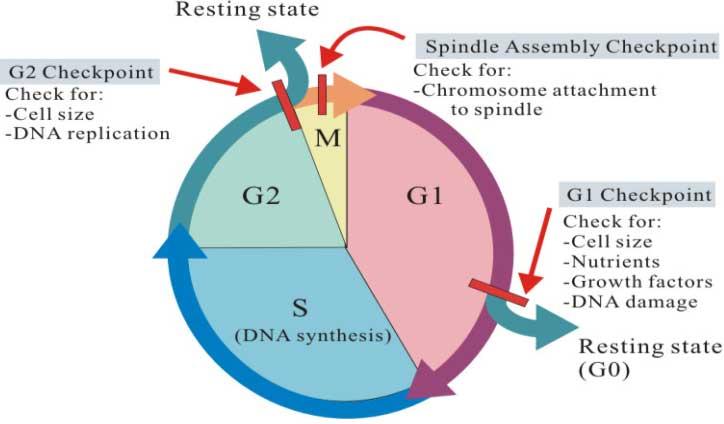
B) G₁
Why do neurons and some other specialized cells divide infrequently?
A) They no longer have active nuclei.
B) They no longer carry
receptors for signal molecules.
C) They have been shunted into
G₀.
D) They can no longer bind Cdk to cyclin.
E) They show
a drop in MPF concentration
C) They have been shunted into G₀.
All cell cycle checkpoints are similar in which way?
A) They respond to the same cyclins.
B) They utilize the same
Cdks.
C) They give the go-ahead signal to progress to the next
checkpoint.
D) They each have only one cyclin/Cdk complex.
E) They activate or inactivate other proteins
E) They activate or inactivate other proteins
At the M phase checkpoint, the complex allows for what to occur?
A) Separase enzyme cleaves cohesins and allows chromatids to
separate.
B) Cohesins alter separase to allow chromatids to
separate.
C) Kinetochores are able to bind to spindle
microtubules.
D) All microtubules are made to bind to
kinetochores.
E) Daughter cells are allowed to pass into G₁
A) Separase enzyme cleaves cohesins and allows chromatids to separate.
For the following question, match the key event of meiosis with the
stages listed below.
I. Prophase I V. Prophase II
II. Metaphase I VI. Metaphase II
III. Anaphase I VII.
Anaphase II
IV. Telophase I VIII. Telophase II
Tetrads of chromosomes are aligned at the equator of the spindle;
alignment determines independent assortment.
A) I
B) II
C) IV
D) VI
E) VIII
B) II
Which of the following best describes the frequency of crossing over
in mammals?
A) ~50 per chromosome pair
B) ~2 per meiotic
cell
C) at least 1-2 per chromosome pair
D) ~1 per pair of
sister chromatids
E) a very rare event among hundreds of cells
C) at least 1-2 per chromosome pair